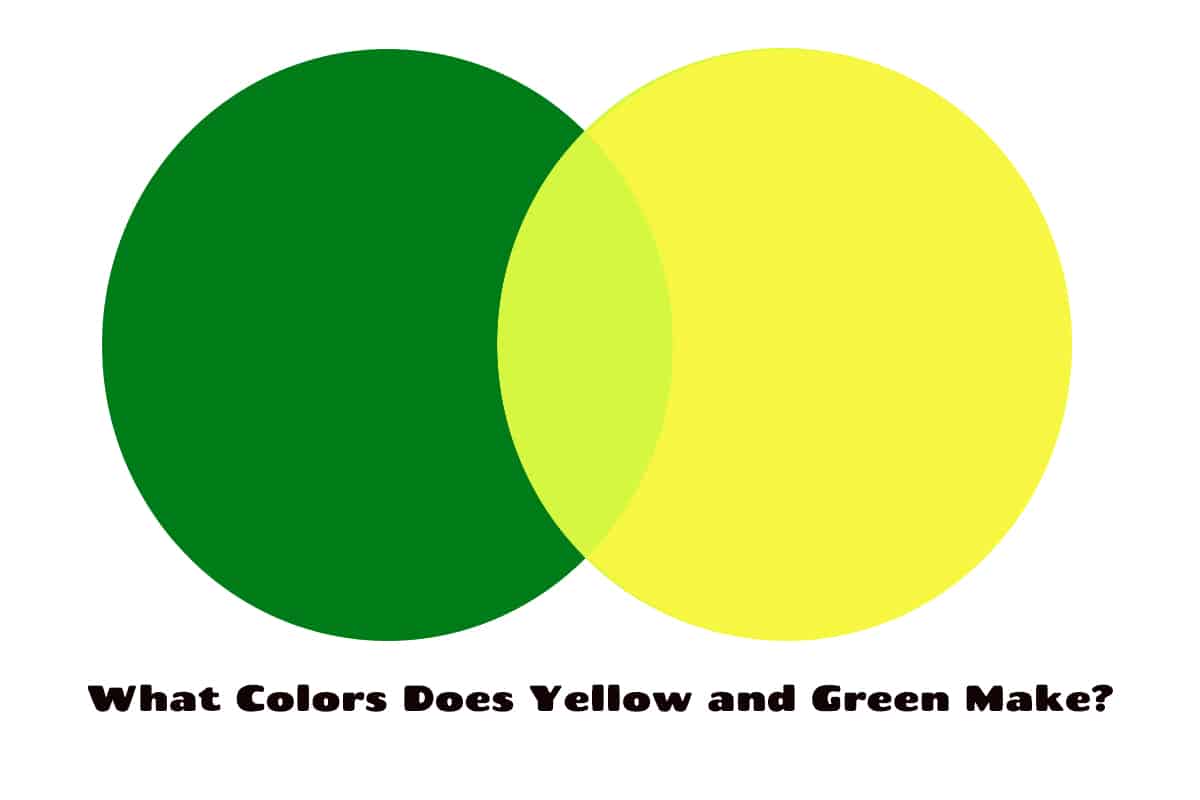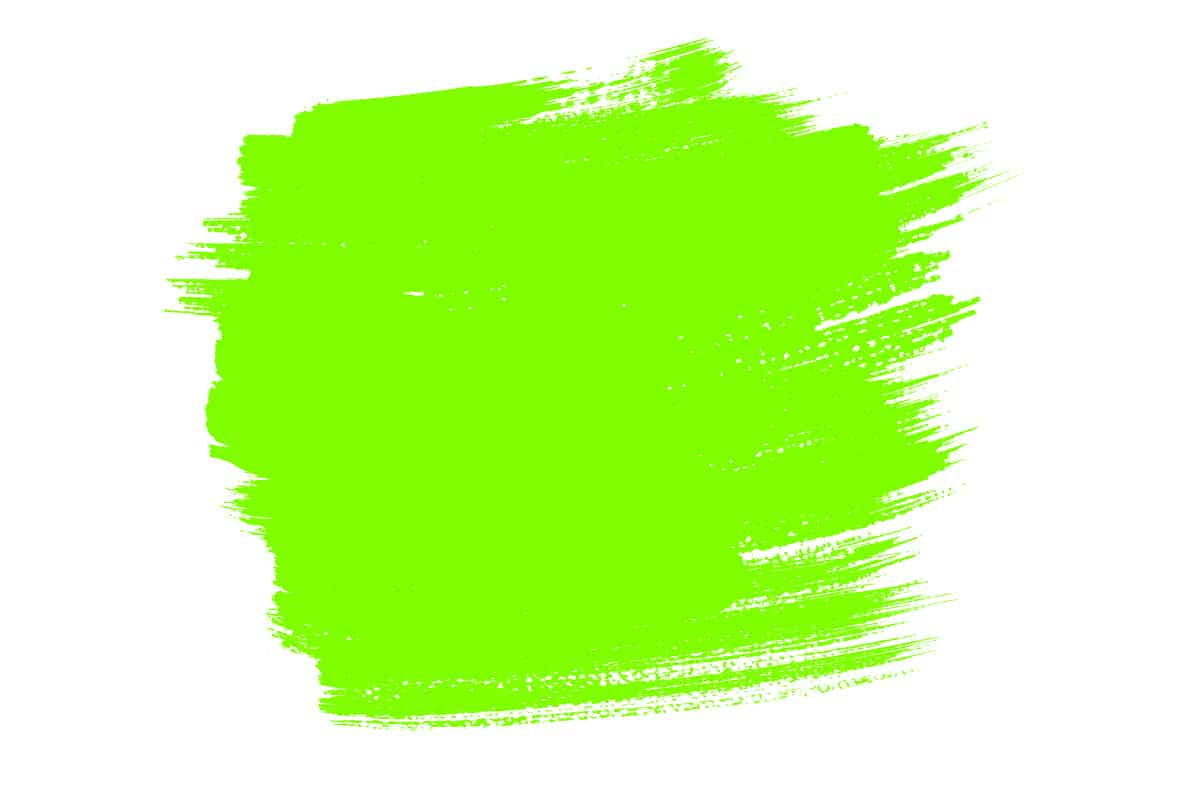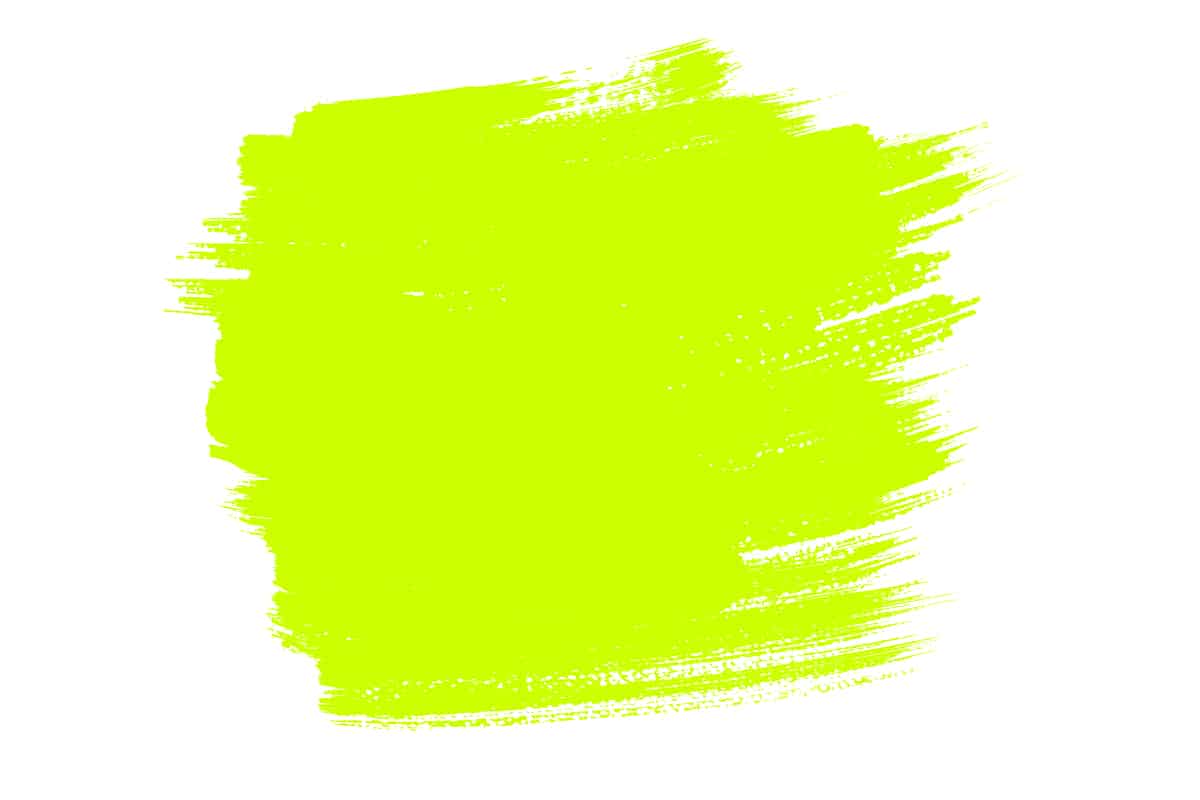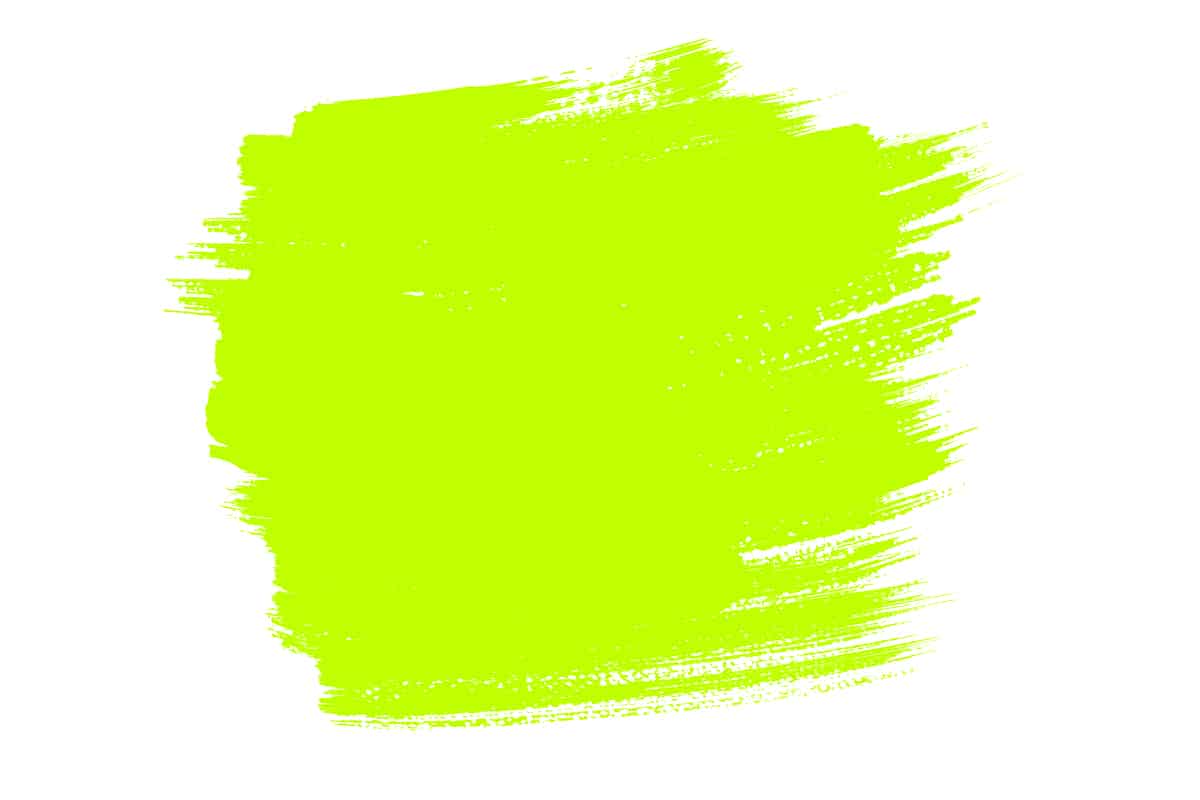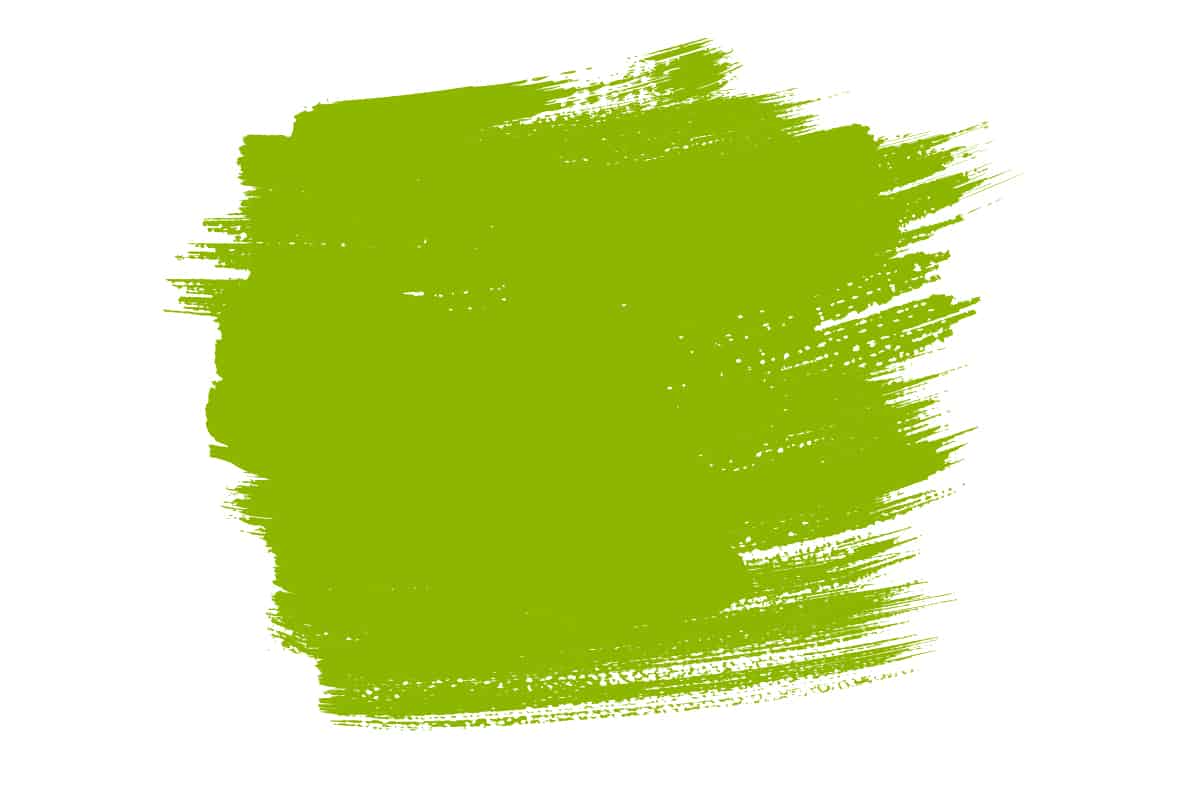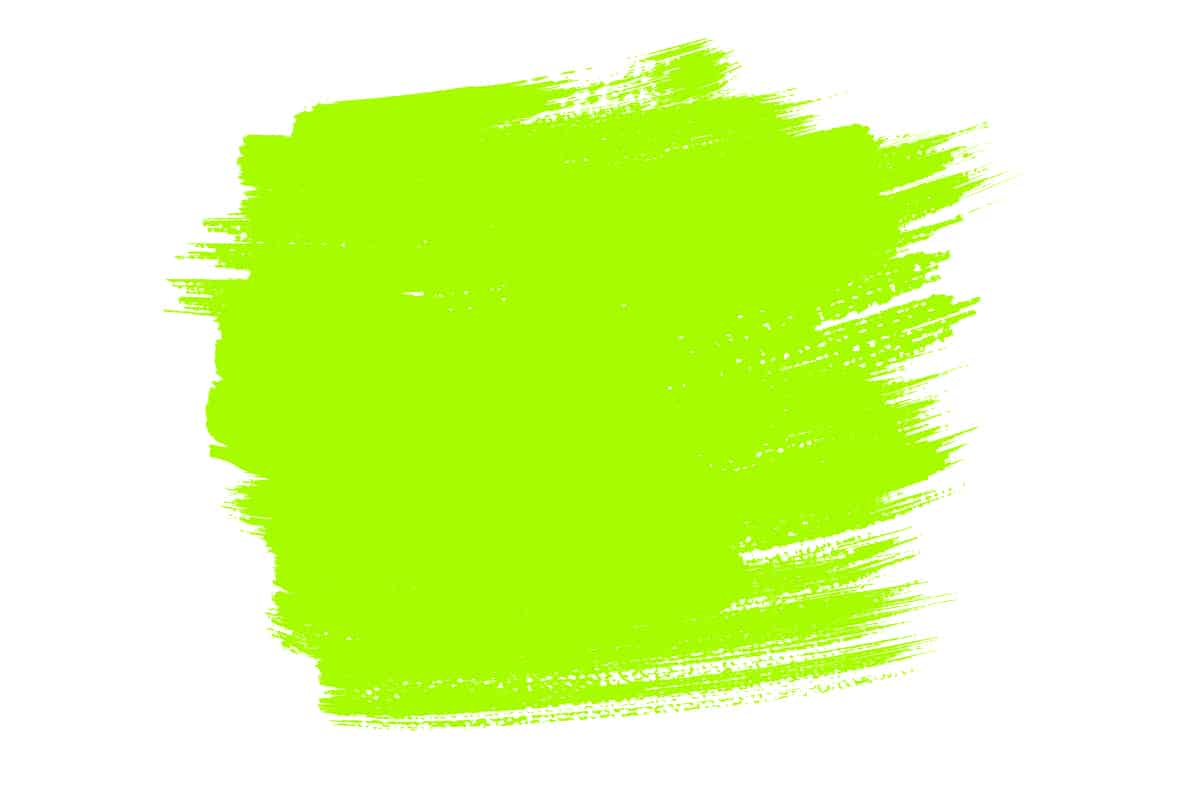Yellow and green are analogous colors because they reside close to each other on the color wheel, and in fact, they are only separated by one color; yellow-green.
Yellow-green is a tertiary color you will get when you mix yellow and green. This color can also be referred to as ‘chartreuse.’
Here we investigate the different shades you can get when you mix yellow and green and how this is influenced by color theory.
What do Yellow and Green Make?
When you mix yellow and green paint together, you will get a color called ‘chartreuse’ or ‘yellow-green’. This is a tertiary color because it is created by combining primary and secondary colors. In this example, yellow is the primary color, and green is the secondary color.
A primary color is defined as being the source of all other colors, which can only be made using pigment rather than mixing other colors together. A secondary color is a color that is made by mixing two primary colors together. Here, our secondary color, green, is made by mixing 50% blue with 50% yellow.
When you mix green and yellow together at a ratio of 50% green to 50% yellow, you are actually mixing 25% blue with 75% yellow since green is a mix of blue and yellow. When green and yellow are mixed in even amounts, the resulting color is yellow-green. This tertiary color is exactly halfway between yellow and green, so it sits sandwiched between these two colors on the color wheel.
The Meaning of Chartreuse
Chartreuse is a vivid yellow-green color, made from half yellow and half green. However, since green is made up of half yellow and half blue, we can see that in terms of primary colors, chartreuse comprises three-quarters yellow and one-quarter blue. This means that despite being made up of warm and cool temperature colors, the overwhelming feeling of chartreuse is warm because it is predominantly warm.
However, if you consider color temperature on a sliding scale, chartreuse could be considered a cool variety of yellow since it is much cooler than shades of yellow that contain a hint of orange or red, such as mustard. You could also consider chartreuse to be a warm shade of green since it is warmer than comparable cool greens such as mint or emerald.
Since chartreuse is made up of yellow and green, it can exude feelings and emotions associated with these colors. Like green, chartreuse feels fresh and lively, and it can create a sense of vitality and energy.
It is also linked to spring colors, which we associate with growth and new beginnings. Chartreuse also possesses some of the energy of yellow; for example, it feels sunny and positive and can evoke feelings of enthusiasm and youth.
What Colors Can You Make with Green and Yellow?
If you’re mixing green and yellow together, the resulting color is going to depend on what type of green and yellow you started with, and what proportion of the colors are going in the mix.
For example, if you mix 80% green with 20% yellow, then the color you get is going to be more green than it is yellow. In this case, you’ll get a yellow-tinged shade of green which looks something like dark lime green.
Chartreuse
Chartreuse, also known as yellow-green, is achieved by mixing exactly half green and half yellow. It is a vibrant and energizing color that contrasts beautifully with hot pink. The hex code for chartreuse is #7fff00. In an RGB color space, chartreuse is made from 49.8% red, 100% green, and 0% blue, and in a CMYK color space, it is made from 50.2% cyan, 0% magenta, 100% yellow, and 0% black.
The lightness of chartreuse is 50%, and the saturation is 100%, resulting in a bright and vivid color. You can soften this color by adding gray to it for a muted tone or make it lighter by adding white. Adding a small splash of black will give it a darker, slightly olive or khaki green effect.
Fluorescent Yellow
Fluorescent yellow is a shade of yellow that leans slightly towards green. Some people even consider this color to be a type of green because it has such a green tinge. This is the color of a standard tennis ball, which some people will argue is yellow, and some people will argue is green.
You can create this color using around 80 to 90% yellow and 10 to 20% green. In an RGB color space, the hex code for fluorescent yellow is #ccff00, being made from 80% red, 100% green, and 0% blue. Meanwhile, in a CMYK color space it will be made from 20% cyan, 0% magenta, 100% yellow, and 0%. As a very intense color, fluorescent yellow has a 100% saturation and 50% lightness.
Lemon Lime
Lemon lime is a green shade that is sometimes simply known as ‘lime.’ It is made up of around 60% green and 40% yellow, or in terms of primary colors, it will be 70% yellow and 30% blue.
This vibrant and refreshing color is synonymous with summer, and it can create a tropical or exotic vibe when used with other fluorescent or neon colors. This color has a hex code of #bfff00. In an RGB color space, it will be made up of 74.9% red, 100% green, and 0% blue, and in a CMYK color space, it is made from of 25.1% cyan, 0% magenta, 100% yellow, and 0% black.
Apple Green
Apple green is a yellow-tinged shade of green that can be made by mixing a large amount of green with a small amount of yellow. To achieve this, add drops of yellow gradually to a pot of green paint, mixing as you go until the desired color is achieved. When using primary yellow and true green, you will need around 80% green and 20% yellow.
This could also be made from 60% yellow and 40% blue. The hex code for apple green is #8db600. In an RGB color space, this color will be made from 55.3% red, 71.4% green, and 0% blue. In the CMYK color space, it will be made from 22.5% cyan, 0% magenta, 100% yellow, and 28.6% black. Apple green has a saturation of 100%.
Spring Bud
Spring Bud is a green color that leans slightly towards yellow on the color wheel. It is very similar to lemon lime, but contains marginally greener, and the tiniest hint of black to make it slightly darker. It is more reminiscent of the fresh spring growth of the first foliage each year, more so than tropical citrus fruits.
Spring bud has a hex code of #a7fc00. In an RGB color space, this color is made from 65.5% red, 98.8% green, and 0% blue, and in a CMYK color space, it is made from 33.7% cyan, 0% magenta, 100% yellow and 1.2% black.
